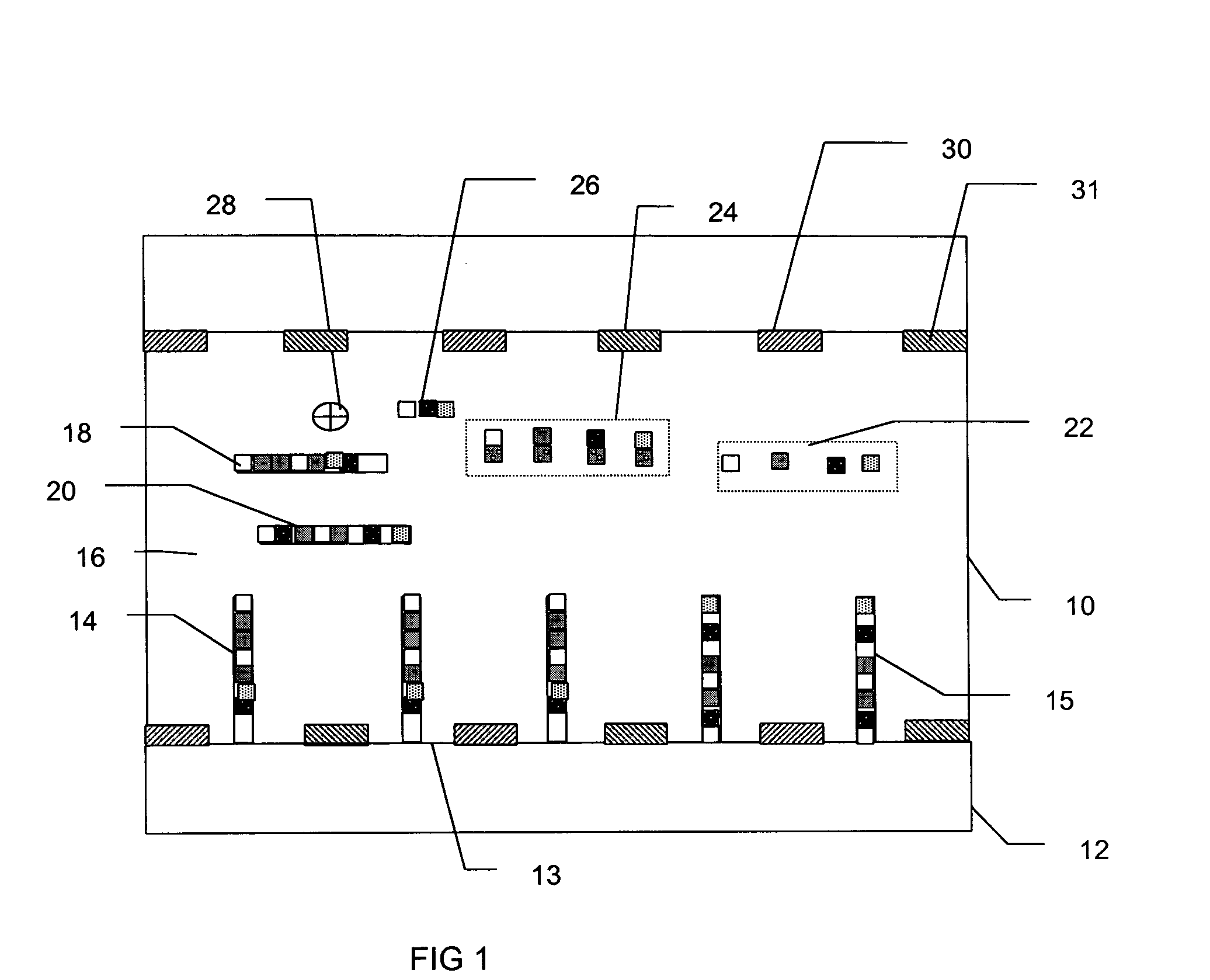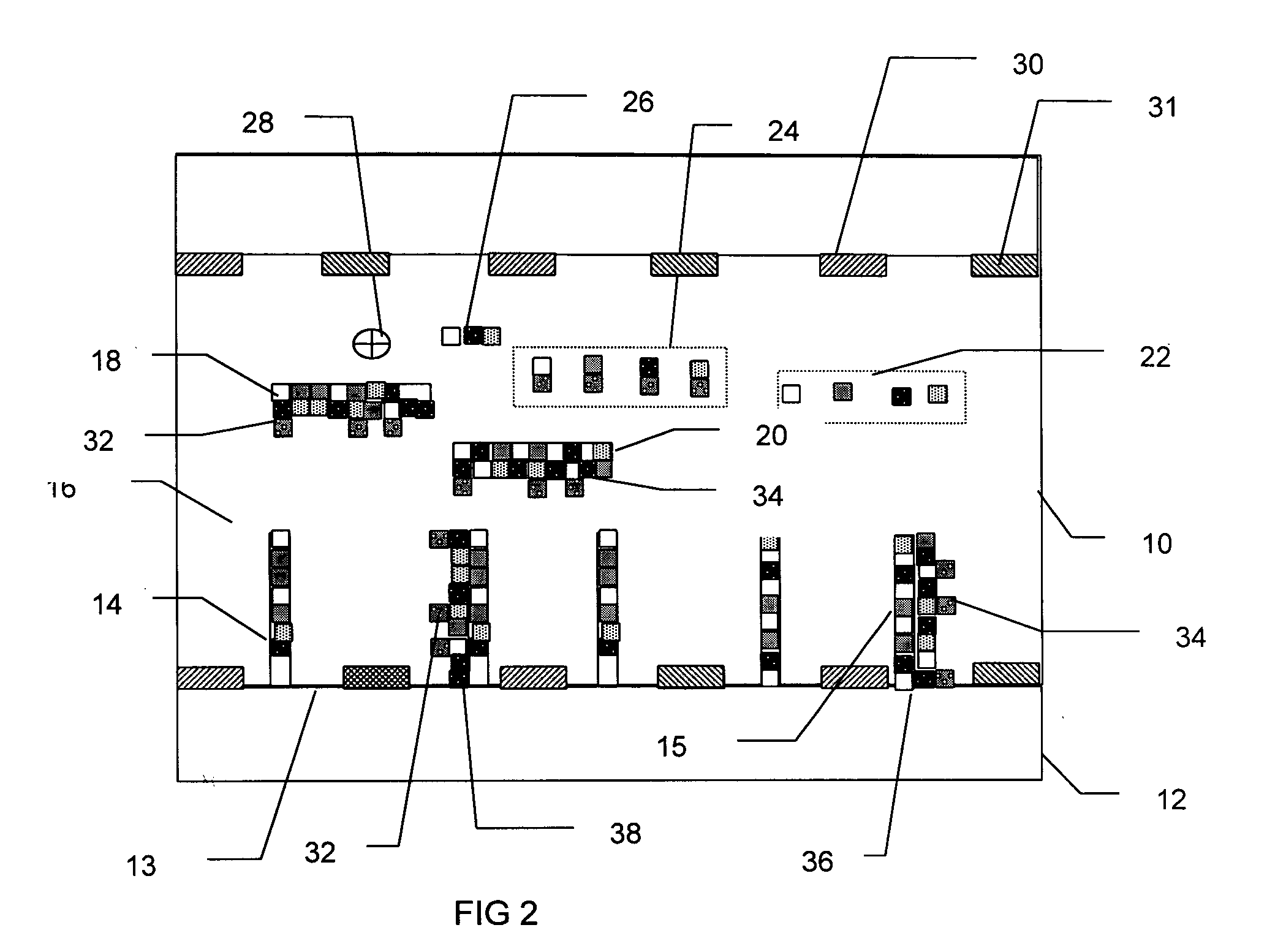Real-time PCR microarray based on evanescent wave biosensor
a biosensor and real-time pcr technology, applied in biochemical equipment and processes, specific use bioreactors/fermenters, biomass after-treatment, etc., can solve the problems unreliable target estimation of pcr end product, and limitations of real-time pcr technology
- Summary
- Abstract
- Description
- Claims
- Application Information
AI Technical Summary
Problems solved by technology
Method used
Image
Examples
Embodiment Construction
[0023] The present invention provides a system and method capable of real-time, simultaneous, quantitative measurement of a plurality of nucleic acids in a sample.
[0024] In an exemplary embodiment, the nucleic acids in the sample are amplified using the polymerase chain reaction (PCR). The PCR is a well known method of amplifying one or more stands of deoxyribonucleic acid (DNA), begun by placing the target DNA in a buffer containing primer DNA, the nucleotides adenine (A), thymine (T), cytosine (C) and guanine (G) (collectively referred to as dNTPs), a DNA polymerase and primers. The primers are short strands of DNA, with sequences that complement one end of a nucleic acid to be amplified. The primers initiate replication of that target DNA.
[0025] The PCR process has three main steps: denaturation, annealing and extension. In the denaturation step, the mixture is heated to about 94 degrees Celsius, at which temperature all the DNA separates into single strands. The mixture is the...
PUM
| Property | Measurement | Unit |
|---|---|---|
| temperature | aaaaa | aaaaa |
| temperature | aaaaa | aaaaa |
| temperature | aaaaa | aaaaa |
Abstract
Description
Claims
Application Information
 Login to View More
Login to View More - R&D
- Intellectual Property
- Life Sciences
- Materials
- Tech Scout
- Unparalleled Data Quality
- Higher Quality Content
- 60% Fewer Hallucinations
Browse by: Latest US Patents, China's latest patents, Technical Efficacy Thesaurus, Application Domain, Technology Topic, Popular Technical Reports.
© 2025 PatSnap. All rights reserved.Legal|Privacy policy|Modern Slavery Act Transparency Statement|Sitemap|About US| Contact US: help@patsnap.com



